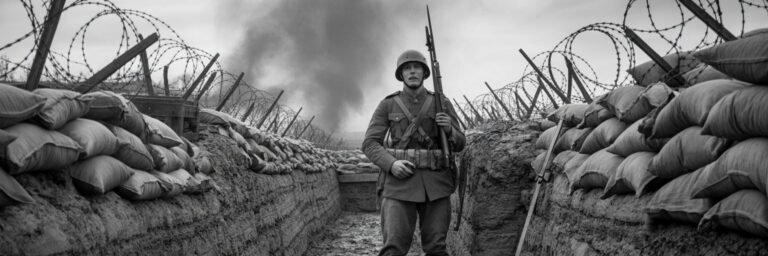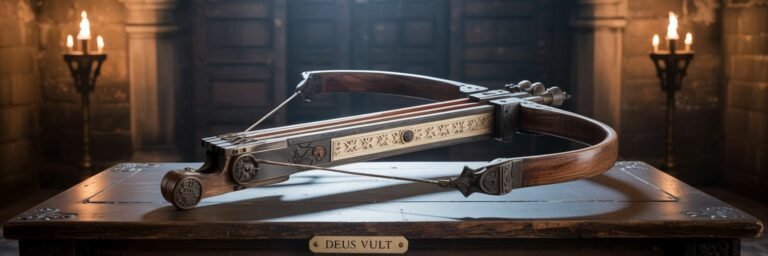INTRODUCTION
Throughout the annals of history, warfare has been an inevitable part of human existence. The evolution of weapons and strategies used in combat has impacted civilization in profound ways. This intriguing labyrinth of arms and warfare not only reveals incredible stories of heroes and villains who have shaped the course of history, but also generates intriguing theories, mysteries, controversies, and cultural significances worth exploring.
HISTORICAL BACKGROUND
The birth of weaponry took place in prehistoric times, as essential tools needed for survival gradually transformed into improvised weapons. The Oldowan period in Africa (2.6 to 1.7 million years ago) witnessed hominids using simple stone tools, which are considered the earliest weapons. Fast forward thousands of years to the Bronze Age, and you’d find an explosion of advances in weaponry with the invention of the sword, spear, and bow.
The tracings of heroes and villains of warfare become more distinct with the advent of recorded history. Figures like King Leonidas of Sparta, who held off the Persian army at the Battle of Thermopylae, and Hannibal Barca, who confronted the Roman Empire with an audacious crossing of the Alps with war elephants, come into play. Legendary weapons of these heroes like Excalibur and Gungnir also rose to prominence, oftentimes becoming as famous, if not more so, than the wielders.
Moving into the Middle Ages, developments in warfare and weaponry accelerated, with the invention of gunpowder and the rise of armored knights. This period was marked by figures like Joan of Arc, who donned armor to lead France in the Hundred Years War, and infamous villains like Vlad the Impaler.
In the modern era, warfare became increasingly mechanized, leading to the use of advanced weaponry that had devastating impacts. World Wars introduced us to figures like Manfred von Richthofen (the Red Baron) and inventions like the atomic bomb. Simultaneously, it spawned villains like Adolf Hitler, whose use of weapons of mass genocide left an indelible scar on history.
THEORIES AND INTERPRETATIONS
Academic theories regarding the roles of heroes, villains, and weapons in warfare vary widely. Traditionalist interpretations often place great emphasis on the heroism of key leaders and the power of their weapons. For instance, the “Great Man” theory suggests that history is shaped by extraordinary individuals – emphasizing figures like Napoleon Bonaparte and his ability to innovate warfare using mass conscription and combining infantry, cavalry, and artillery in a “combined arms” strategy.
On the other hand, “bottom-up” theories focus on the collective actions and experiences of soldiers, illustrating their roles as the heroes or villains in warfare. Historian John Keegan is known for pioneering this approach in his work “The Face of Battle”.
Moreover, cultural interpretations of weaponry have ignited academic debate. Some see the weapon as a standalone hero, an emblem of power and technology that has a transformative effect on society. Others see weapons as symbols of destruction and tyranny, signifying the darker side of human ambition.
MYSTERIES AND CONTROVERSIES
Through the ages, warfare and weaponry have been entwined with mysteries. The historical controversy over the existence of powerful mythical weapons like King Arthur’s Excalibur or the Holy Lance of Longinus demonstrates how they remain topics of fascination. Similarly, there exists a debate over the existence and usage of Greek Fire in Byzantine warfare, a weapon of mysterious composition and devastating effect.
Controversies also arise around the acts of some wartime figures, blurring the lines between heroes and villains. One striking example is Bomber Harris, who was seen as a hero for leading the RAF Bomber Command in World War II. However, the bombing campaign’s devastating effect on civilian populations has led others to label him a war criminal.
SYMBOLISM AND CULTURAL SIGNIFICANCE
The symbolism attached to heroes, villains, and weapons has permeated cultural narratives for millennia. Heroes and their weapons have generally symbolized courage, honor, and triumph over evil. This is evident in how King Arthur and his sword Excalibur are celebrated in English folklore or how samurai and their katanas have become emblematic of Japanese history.
Villains and their weapons, on the other hand, have become symbols of tyranny and destruction. Adolf Hitler and the atomic bomb personify these darker elements of history — symbolizing the sizeable toll that can be exacted through misuse of power.
MODERN INVESTIGATIONS
Modern historical investigations bring fresh perspectives to the narratives of warfare. Digitization of archival materials has unearths previously obscure figures, both heroic and villainous. Computational models shed light on conscription patterns, technology adoption, and the impact of advanced weaponry on battle outcomes. Archeology continues to reveal ancient weaponry, prompting reinterpretations of historic battles.
Amid renewed scrutiny, even celebrated figures and their weapons are not immune. Joan of Arc, often considered a heroic icon, has been re-examined through feminist and psychoanalytic lenses, with some suggesting that her military actions were spurred by mental instability.
LEGACY AND CONCLUSION
The legacy of heroes, villains, and weaponry in warfare is multidimensional, deeply embedded in the historical, cultural, and intellectual tapestry of civilizations. They have shaped national identities, influenced literature, cinema, and popular culture, and sparked scientific and technological advancements.
However, the destructive potential of advanced weaponry and the human cost of warfare also cast a long shadow over this legacy, acting as a sobering reminder of the duality of human nature. This is most evident in the contemporary discourse around nuclear disarmament and arms control, illustrating the lessons learnt from the weapon-infused narratives of the past.
As we delve into the complex narratives and intricate symbolism surrounding warfare and weapons, it becomes clear that heroes and villains are far more than individual players in the theater of war. Instead, they are inextricable parts of our understanding of history, providing critical insights into human conduct, aspirations, and the harsh realities of power and conflict.


